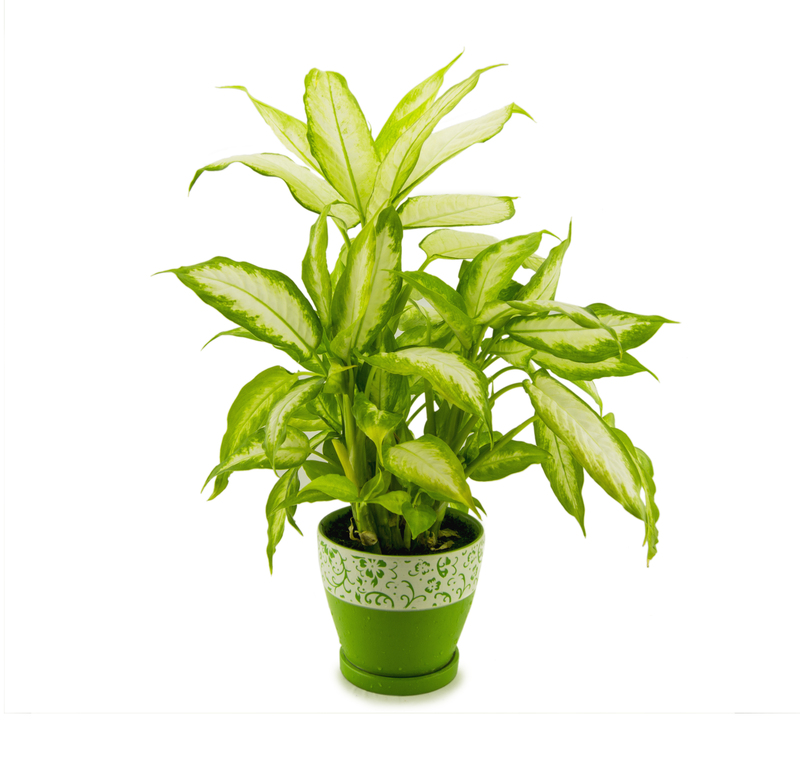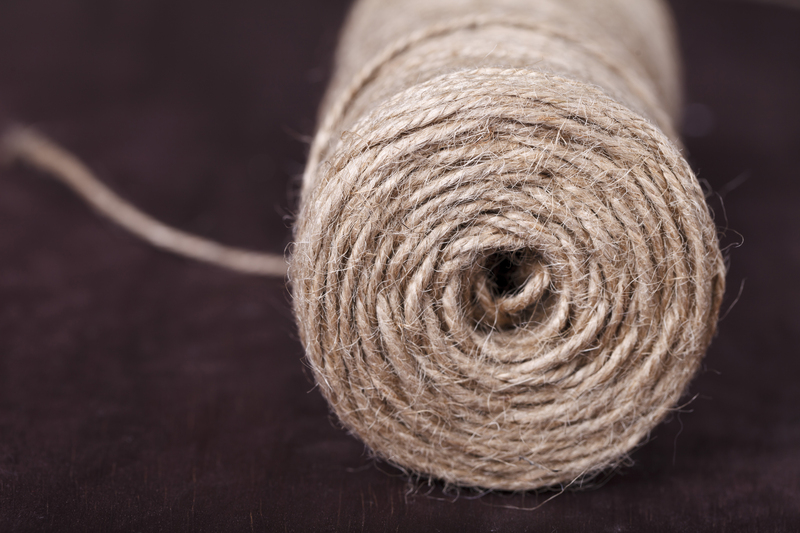Save Time and Effort with These Top Three Weed Control Tips
Posted on 01/06/2025
Save Time and Effort with These Top Three Weed Control Tips
Controlling weeds can be one of the most time-consuming and frustrating aspects of maintaining a garden or yard. Whether you're a seasoned gardener or just starting out, the constant battle against weeds can feel never-ending. The good news is, there are proven strategies to minimize your workload and keep those pesky intruders at bay. In this article, we'll dive deep into the top three weed control tips that are sure to save you both time and effort, while helping you achieve a lush, healthy, and attractive landscape.

Understanding Weed Growth: Why Is Weed Control So Challenging?
Before jumping into actionable advice, it's essential to understand why weed control takes so much out of us. Weeds are opportunistic plants, meaning they quickly adapt and thrive in almost any condition. They compete vigorously with desired plants for water, nutrients, sunlight, and space. Moreover, many weed species are capable of spreading rapidly--whether by seeds, roots, or runners--making them hard to eradicate completely once established.
Effective weed management requires a multi-pronged approach that addresses both prevention and active removal. By focusing on the best weed management tips, you'll be able to create an environment where weeds find it hard to survive.
Top Three Weed Control Tips to Save Time and Effort
1. Mulch Matters: Smother Existing Weeds and Block New Ones
When it comes to weed prevention, mulch is your garden's best friend. Mulch acts as a natural barrier--preventing sunlight from reaching weed seeds and minimizing their growth. Not only does mulch help in keeping your soil moist and cool, but it also improves soil health as it breaks down.
Types of Mulch You Can Use:
- Organic Mulches: Shredded bark, wood chips, straw, grass clippings, compost, or leaf litter. These enrich the soil as they decompose.
- Inorganic Mulches: Gravel, stone, landscape fabric, or black plastic. These are long-lasting but don't contribute nutrients to the soil.
How to Mulch Properly for Weed Control:
- Clear Existing Weeds: Prior to laying down mulch, pull or hoe out any visible weeds from your planting beds.
- Apply a Thick Layer: Spread mulch two to four inches deep, ensuring even coverage. Thinner layers allow sunlight to reach the soil.
- Avoid Plant Stems: Keep mulch a few inches away from plant stems and tree trunks to prevent rot.
- Refresh as Needed: Replenish your mulch layer as it decomposes or thins out to maintain its weed-blocking properties.
The best part? Proper use of mulch can dramatically cut down on time spent weeding, making it a must-do for anyone looking for the easiest methods to control garden weeds.
2. Act Fast & Consistent: The Power of Timely Weed Removal
One of the biggest mistakes gardeners make is waiting too long to tackle weeds after they appear. Weeds grow quickly, often outpacing the growth of your desired plants. If left unchecked, they can flower and produce seeds, dramatically multiplying your weed problem.
Why Timely Weed Removal Matters:
- Reduces Seed Spread: Removing weeds before they set seed stops the next generation in its tracks.
- Minimizes Labor Down the Road: Young weeds are much easier to pull than established ones with deep roots.
- Prevents Competition: Early action ensures your vegetables, flowers, or shrubs have access to all nutrients and water.
Best Practices for Efficient Weed Pulling:
- Weed After Rain: Moist soil makes it easier to pull weeds out completely, including their roots.
- Use Quality Tools: Invest in a good hoe, hand fork, or weeding tool for better leverage and comfort.
- Regular Walk-Throughs: Spend a few minutes each week inspecting your beds and tackling weeds before they become problematic.
- Dispose Properly: Some weeds can regrow from stem cuttings or drop seeds in compost--dispose of them responsibly.
*Tip:* Consistency is key. By making weed control part of your weekly gardening routine, you'll spend far less time and effort on weed management in the long run.
3. Preventative Strategies: Stop Weeds Before They Start
The most effective way to save time on weed control is to stop weeds from taking root in the first place. Proactive measures--such as using ground covers, installing landscape fabric, and proper plant spacing--can almost eliminate the need for constant manual labor or chemical herbicides.
Proven Preventative Weed Control Techniques:
- Landscape Fabric: Installing a layer of landscape fabric under mulch prevents sunlight from reaching weed seeds. Make sure to overlap fabric edges and anchor them securely.
- Dense Planting: Close plant spacing naturally shades the soil, stopping weed seedlings from receiving the light they need to grow.
- Groundcover Plants: Low-growing plants such as creeping thyme or sweet woodruff create a living mulch that outcompetes weed seeds.
- Edging: Install edging around beds to stop aggressive lawn weeds from invading your flower or vegetable gardens.
Other Advanced Tips:
- Pre-Emergent Herbicides: In non-edible areas, using a professional-grade pre-emergent herbicide in early spring can stop weed seeds from germinating.
- Cultivate Healthy Soil: Healthy soil leads to healthy plants, which can form dense canopies that naturally block out sunlight from weed seeds.
By installing preventative weed barriers and practices, you create an environment where weeds struggle to take hold, dramatically reducing your overall workload.
Maintenance Tips for Ongoing Weed Control Success
Even when you apply the top weed management strategies, some persistent weeds may still pop up. Ongoing vigilance ensures weeds never get out of hand.
- Inspect Regularly: Make a habit of walking your yard or garden at least once a week to spot new weed growth early.
- Maintain Mulch Depth: Replenish mulch layers as needed to consistently block sunlight and maintain soil moisture.
- Improve Garden Design: Incorporate raised beds, containers, or dense plantings to minimize bare soil where weeds can sprout.
- Monitor Edges and Borders: Weeds often creep in from garden edges; keep these areas clear with edging or regular trimming.
*Extra Tip: If you're overwhelmed by invasive or stubborn perennial weeds, consider enlisting local lawn care professionals for targeted treatments or specialized advice.
Eco-Friendly and Safe Weed Control Methods
Many gardeners seek alternatives to chemical herbicides for a safer and more eco-conscious landscape. Luckily, the best weed management methods often overlap with environmentally friendly practices.
Safe Alternatives Include:
- Boiling Water: Pouring boiling water over weeds in cracks or hardscape areas can kill them instantly. Be careful to avoid desirable plants.
- Vinegar Solutions: Household vinegar sprays can be effective against young, tender weeds.
- Solarization: Covering an area with clear plastic during hot months heats soil to temperatures that kill weed seeds.
Remember, integrated weed control strategies--combining preventative, mechanical, and organic approaches--yield the best long-term results without resorting to harsh chemicals.
Frequently Asked Questions about Weed Control
How can I keep weeds out of my vegetable garden?
Maintain thick mulch, weed regularly, and consider using pre-planting landscape fabric or cardboard under paths and between vegetable rows. Avoid letting weeds flower and set seed.
Are there any low-effort groundcovers that control weeds?
Yes! Try creeping thyme, clover, vinca minor, or ajuga. These plants quickly spread to form dense mats that crowd out weeds while adding beauty.
How do organic mulches compare to synthetic ones for weed management?
Organic mulches improve soil structure and add nutrients, while synthetic mulches offer longer-lasting weed suppression. For best results, combine both approaches in different parts of your landscape.
Is hand weeding still necessary if I use mulch and fabric?
You'll greatly reduce the number of weeds, but some may still pop up, especially along the edges or where the mulch is thin. Regular monitoring and spot removal are recommended.

Your Path to a Weed-Free, Low-Maintenance Garden
To save time and effort when controlling weeds, it pays to invest in the right strategies from the beginning. By using mulch, acting quickly, and deploying preventative tactics, you'll spend more time enjoying your yard and less time fighting unwanted plants.
Start implementing these top three weed control methods today and watch your garden transform into a lush, vibrant, and weed-free paradise--no marathon weeding sessions required!
Key Takeaways: Weed Control without the Hassle
- Mulch extensively to smother weeds and improve soil health.
- Remove weeds promptly--especially while young and before they flower or seed.
- Be proactive with weed barriers and dense plantings to stop weeds before they even start.
With these top three weed control tips, you can nurture a beautiful landscape that remains healthy and virtually weed-free, while reclaiming your precious time and energy for things you truly enjoy.
Happy Gardening!

